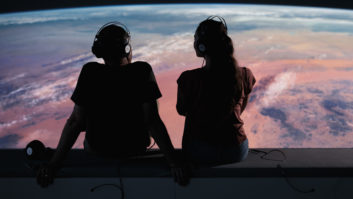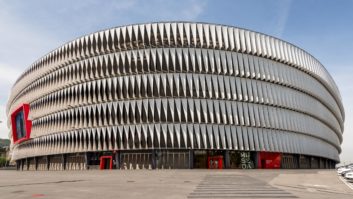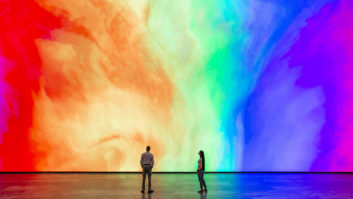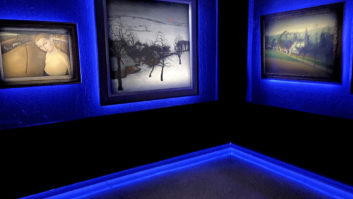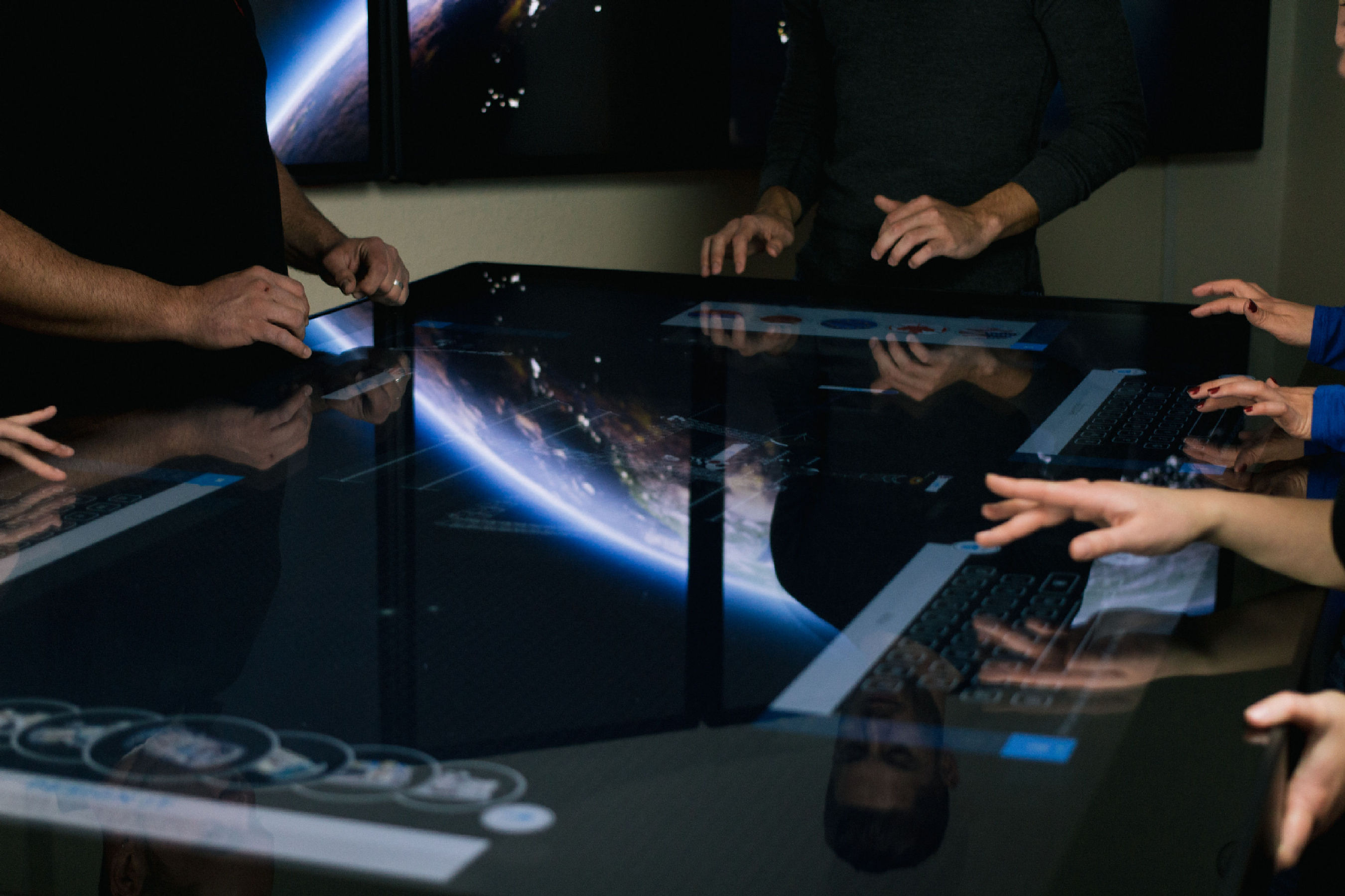
In museums and visitor attractions, a thirst for the latest technology has to be balanced with engaging storytelling to compete for attention in a prosperous global sector. Duncan Proctor reports
Often in spite of wider economic factors, the museums and visitor attractions sector has remained a thriving market that enjoys a healthy supply of investment and cutting-edge technology.
Venues aim to steer a course that enables them to both entice new visitors while also securing all-important repeat visits. This has led to centres becoming more complex and including greater levels of interaction and personalisation. The commercial element also demands that while exhibits are there to educate and entertain, keeping people interested results in longer dwell times and a higher retail spend.
Arms race
As happens in many markets, there is something of an arms race as exhibitions compete with each other to improve the way guests experience and interact within the space. Interactive digital media is now commonplace; therefore museums have to include other elements as well as more sophisticated technology. Visitor expectations have also evolved, with the average customer much more tech savvy than five or 10 years ago, which increases what is needed to entertain them and attain a fully immersive experience for all.
Technology is a central part of this race; however, it is crucial that it serves a purpose and is used to showcase the exhibits with a strong storytelling element. “It is important to start from the content and then consider how it is to be displayed to best effect,” states Ian Crosby, sales and marketing director at Zytronic. The aim is to make the journey as personal as possible to each visitor so everyone can experience something slightly different when they visit an attraction. “We see an ever-increasing demand for the ability to make the visitor experience more personal,” says Matt Barton, CEO at 7thSense Design. This also helps visitors feel part of exhibits – immersed, rather than spectators observing from a distance.
It’s important that both the visitor and the exhibit are considered at every level of technology specification and implementation. If this doesn’t happen, venues can end up being showcases for technology rather than a particular theme or period in history.
Another important factor is balancing the use of leading-edge and more established technology; this ensures that exhibits with a high level of interaction will still be easy for most visitors to experience.
Approaches
What methods and approaches are venues using to improve interactivity and personalisation?
John Dixon, product manager for Leyard and Planar, outlines: “Museums and visitor attractions have evolved from a simple standalone consumer TV display with a video on a continuous loop to much more immersive installations involving touch interactivity. Whether it’s a display that creates the ‘wow’ factor when guests walk in or an exhibit that features interactive displays to create an immersive storytelling experience, museums and visitors attractions want to fully engage guests the entirety of their visit.”
Crosby confirms: “A static display or a looping video is rarely the answer – visitors now expect the opportunity to personalise their visit, and watch or listen to aspects of the presentation that interest them, and skip elements that don’t appeal.”
Dixon continues: “One of the most common ways we see museums improving interactivity is through touch display solutions – from small-screen touch monitors greeting guests immediately upon check-in, to large touch videowalls that allow multiple users to interact with content within an exhibit.”
“The use of interactive displays helps to enhance the visitor’s experience and give them the chance to dig deeper within certain topics of particular interest,” says Jasmin Stemmler, product marketing manager, NEC Display Solutions Europe. “This enables both parties to profit as the museum increases dwell time, whilst the visitor has the feeling of a tailor-made, interactive journey.
The visitor needs to believe in the journey on which they are being taken on
Matt Barton, 7thSense Design
“With interactive tables and displays, physical powers, chemical compositions and the laws of nature can be transferred in a fun way! Interactive floor projection allows visitors to visualise different scenarios and enhance the experience while interactive installations can also educate visitors by having interactive and engaging quizzes, based on the topics they may have come across during their visit.”
Enhancing the experience
There are a number of ways to up the interactive elements, as Barton explains: “This can range from giving guests the choice of a number of ‘fixed stories’ to choose from, to being able to dictate the way the story progresses every step of the way.
“There are many advances in technology that allow us to offer these solutions while at the same time maintaining the super high-quality imagery that customers have come to expect of the top-end dark rides and visitor attractions. In the past, a choice had to be made between interactive functionality and display quality due to processing speed limitations. With new augmented reality (AR) technologies, we can combine the high quality with total visitor control to create exciting new experiences. AR is commonly associated with headsets or glasses; while these options are available, they are not essential to the interactive offering. Our goal is to ensure our products are flexible to take advantage of a multitude of display and interactive control options.”
On this theme, Dixon continues: “We are also seeing more devices like gesture and proximity sensors being deployed with touch displays to create more interactive and unique experiences.”
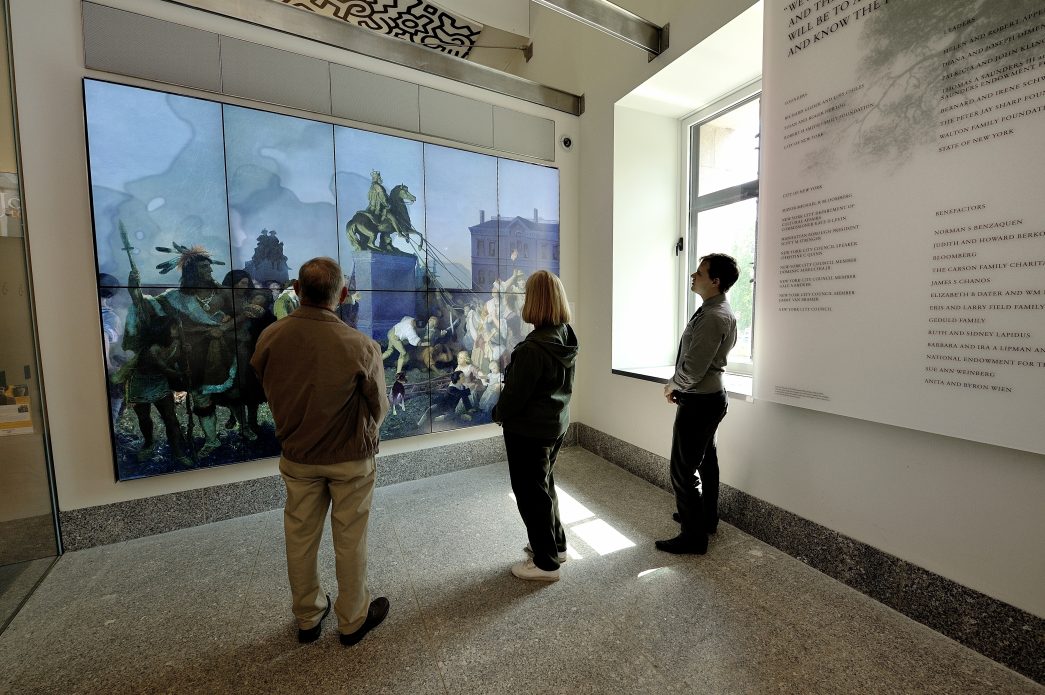
“Touch technology is developing all the time, and visitor attractions are benefitting,” asserts Crosby. “For example, it is now possible to offer object recognition on capacitive touch tables, allowing a model for example to open a particular screen or trigger a video clip.
“Also, force or pressure sensing is a way of interacting with touchscreens that is gaining popularity in handheld consumer devices, and we are leading the industry in making it available for touchscreens in public locations, giving self-service system developers a fantastic opportunity to innovate. For example, a light touch can open a preview of a video, which opens fully on a firmer press. It is particularly powerful when used in combination with Zytronic multi-touch technology, exceeding what is possible on all but the most advanced tablets and smartphones today.”
Use cases
In terms of how these approaches to technology translate into projects and installations, Stemmler continues: “Our latest interactive installation in M KHA, the Museum of Contemporary Art Antwerp, uses an interactive 3 x 2 videowall to inform visitors interactively on the artists and art currently being exhibited. With 15 touch points, the wall can be used simultaneously by several people, allowing users to not only interact with the technology, but to collaborate as a group.”
BrightSign CEO Jeff Hastings has an example of interactivity being used for a temporary project: “BrightSign players were used at Dubai Aquarium & Underwater Zoo to create a special exhibition for Discovery Channel’s Shark Week, which allowed visitors to walk straight into the world’s first interactive digital shark cage with Great Whites swimming around them. The visitor becomes the diver – they experience the excitement of diving with real sharks in a cage. At the front of the exhibit, 28 massive 55in LG screens driven by seven BrightSign 4K players with tiled outputs feature an awe-inspiring scene of Great White sharks circling the outside of a ‘cage’ with the spectator inside.”
This example shows how technology can be used to not only entertain visitors but also educate them on a particular subject. Hastings continues: “Innovative technology allows guests to interact with this unique exhibit to learn more about the sharks. Installer DigiComm used the luma key masking feature we offer on our players to allow graphics and other videos to display through transparencies in the video window. Visitors in the cage can use buttons to select additional video, which plays on top of the main looping presentation. These videos explain, for example, how the shark’s senses work. The buttons control the players directly using the UDP inputs. The roof of the cage is a translucent material, on which projectors powered by BrightSign display images of shark bellies to complete the visitor’s experience.”
Touch technology is developing all the time, and visitor attractions are benefitting
Ian Crosby, Zytronic
Dixon adds: “Another example is the New-York Historical Society Museum and Library, where a Planar videowall depicts a stationary image of a painting called ‘Pulling Down the Statue of King George III,’ by the artist Johannes Adam Simon Oertel. When a small group of visitors stands in front of the videowall, sounds can be heard and the image then begins to move. As more people gather, the crowd depicted in the painting comes to life and pulls on a rope, bringing the King George statue to the ground in a cloud of dust and amid sounds of cheering and dogs barking.”
Educating visitors is much easier when they are engaged, which is where adding AV into the mix pays off. “The Pan Tadeusz museum in Wroclaw, Poland, has been designed with numerous multimedia experiences to showcase Polish history and culture through 200 exhibits along with over 100 games,” says Crosby. “Immersive technologies provide virtual journeys, cinematic screens and engaging avatars bring the history to life, inspiring educational discussion and debate, and a large 65in touch sensor has been attached to an oval table to provide interactive games.”
Story remains key
These examples illustrate how technology can be applied to a broad range of exhibitions and is useful for more than entertainment. It also shows the level of potential that exists and how there are numerous ways in which interactivity and personalisation can be incorporated.
Although the arms race will continue, it is important to remember the human element and avoid turning exhibits into tech showcases where the content turns into an incidental detail. “Story remains key,” states Barton. “The visitor needs to believe in the journey on which they are being taken – offering them control over that journey enhances that belief and keeps them engaged for longer. This engagement is what our customers seek and what we work to deliver with our modern technologies.”
www.7thsensedesign.com
www.brightsign.biz
www.nec-display-solutions.com
www.planar.com
www.zytronic.co.uk



